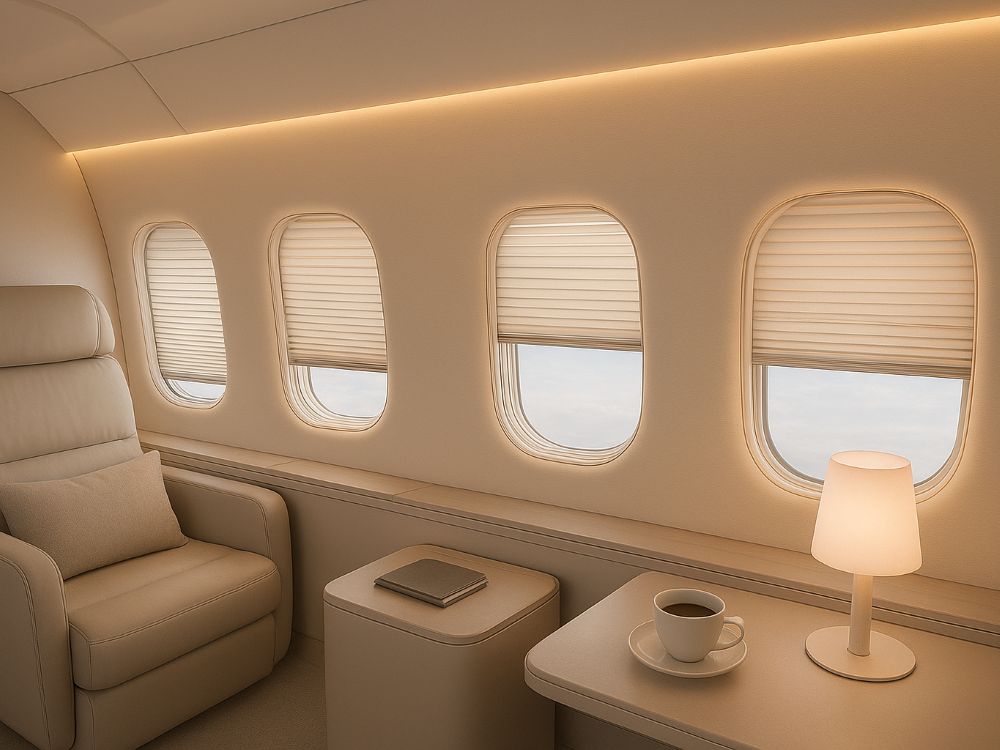A Thought Leadership Series Inspired by the European Vehicle Glazing Innovation Summit Featuring Olaf Schmücking, Gauzy Automotive Executive.
Key Takeaways
- Glass has evolved from a passive material into an active, intelligent surface that enhances comfort, energy efficiency, and serves as an interactive platform inside the cabin.
- Gauzy’s SPD and PDLC smart glass technologies enable dynamic shading, privacy, and immersive display integration across automotive glazing.
- Smart glazing contributes to EV energy efficiency by reducing solar heat load and minimizing HVAC power demand.
- Regulatory frameworks like UN/ECE R43 continue to shape adoption, while Gauzy’s solutions lead in compliant, scalable integrations beyond the B-pillar.
- Through partnerships and ongoing R&D, Gauzy is advancing scalable, production-ready smart glazing for next-generation mobility.
Part 1: The Evolving Role of Glass in Automotive Design
Once a simple barrier between passengers and the road, automotive glass is now one of the most transformative elements in vehicle design. It shapes light, energy use, and human interaction within the cabin.
“At a design conference 15 years ago, someone asked what if the glass could adapt when cars are parked, Olaf Schmücking recalled. Today, that idea is becoming reality.”
As vehicles become quieter and more connected, glazing is turning into a digital interface. Gauzy’s SPD (Suspended Particle Device) and PDLC (Polymer Dispersed Liquid Crystal) films make it possible for windows, partitions, and roofs to dynamically control transparency, improve comfort, and integrate new forms of user interaction.
From BMW’s i Vision Dee to Mercedes-Benz’s Vision V, smart glass enables adaptive shading and interactive displays, integrating projection and other technologies that enhance both usability and design.
“We’ll see touch panels in side windows,” Olaf predicted, where passengers or drivers can interact directly with the glazing itself.”
Part 2: Smart Glass as a Platform for Energy Efficiency
Smart glass is not only about luxury or aesthetics, but also a functional solution that supports sustainable mobility.
“For the end customer, battery range or fuel consumption is a big issue, Olaf explained. With smart films, you can reduce interior temperature dramatically, lowering the energy demand for the climate system. Our SPD film blocks up to 99 percent of visible light and reflects about 48 percent of total solar energy entering the car.”
By managing heat and light, Gauzy’s smart glazing enhances comfort and helps electric vehicles maintain range without compromising visibility. Real-world deployments in Ferrari’s Purosangue and Cadillac’s CELESTIQ prove the technology’s efficiency and scalability.
Part 3: Innovation Ahead of Legislation
Technological innovation often moves faster than regulation. Smart glazing is no exception.
“The biggest obstacle is in front of the B-pillar, Olaf noted. Regulations like UN/ECE R43 require 70 percent visible light transmittance for windscreens and front windows. It took years to move from 75 to 70 percent.”
While full compliance in front glazing awaits regulatory evolution, Gauzy’s technologies already serve approved applications—such as dimmable sun visors, panoramic roofs, and privacy partitions—delivering real-world functionality today while preparing for the vehicles of tomorrow.
Part 4: Scaling Smart Glass for Production
As OEMs move from prototype to production, scalability becomes the next frontier.
“The lamination process gives us a high scrap rate, Olaf explained. Even minor design changes can cause wrinkles or defects. To achieve scalability, collaboration across the entire value chain, from glass processors to OEMs, is crucial.”
Gauzy’s vertically integrated model spanning film production, coating, and system assembly ensures precision and repeatability at scale. Strategic partnerships with automakers and Tier-1 suppliers are key to turning intelligent glazing into an automotive standard.
Part 5: The Future of Glass: Full Blackout and Beyond
The next generation of smart glazing aims for higher contrast, deeper black levels, and expanded interactivity.
“We’re working on it, Olaf said. Current SPD systems achieve about 0.2 percent light transmission, close to complete blackout. But we want to go further.”
Gauzy’s dual-stack SPD and PDLC solutions, already featured in concept vehicles, deliver near-total shading while supporting projection and touchscreen functions. New black-colored SPD films enhance design flexibility and visual contrast, creating new possibilities for in-cabin ambience and privacy.
“Smart glass is becoming part of the vehicle’s interactive ecosystem, Olaf added. Dynamic dimming, projection displays, and touch-enabled glazing are now part of how drivers and passengers connect with their environment.”
The Road Ahead
As vehicles evolve into digital living spaces, smart glass will play a central role in how we experience light, privacy, and interaction. Gauzy’s technology roadmap, spanning SPD, PDLC, and hybrid glazing solutions, continues to define this evolution through performance, compliance, and manufacturability.
With industry collaboration, advanced R&D, and scalable production, Gauzy is helping automakers turn intelligent glazing into a defining element of next-generation mobility.
Ready to Redefine Automotive Light Control?
Explore how Gauzy’s smart glass technologies transform design, comfort, and interactivity for the world’s leading automakers.
Discover Gauzy Automotive Solutions.
Speak to an Automotive Smart Glass Expert Today
FAQ
Smart glass uses switchable film technologies like SPD and PDLC to adjust transparency for shading, privacy, and energy management in real time.
By reducing solar heat gain, smart glass minimizes air conditioning use, extending electric vehicle battery range and improving comfort.
Current regulations limit front glazing transparency to a minimum of 70 percent VLT under UN/ECE R43. Smart glass is fully compliant for side windows, roofs, and partitions, with ongoing regulatory developments for expanded use.
Both technologies use nanoparticles that align or scatter when voltage is applied, controlling the amount of light that passes through. SPD (Suspended Particle Device) uses light-absorbing particles to achieve adjustable shading, while PDLC (Polymer-Dispersed Liquid Crystal) controls opacity to provide instant privacy. Gauzy’s dual-stack solution combines both technologies, enabling dynamic shading and full blackout effects.
Gauzy’s technologies appear in production and concept vehicles from brands like Ferrari, Cadillac, Mercedes-Benz, and BMW, demonstrating scalability across luxury and next-generation models.




